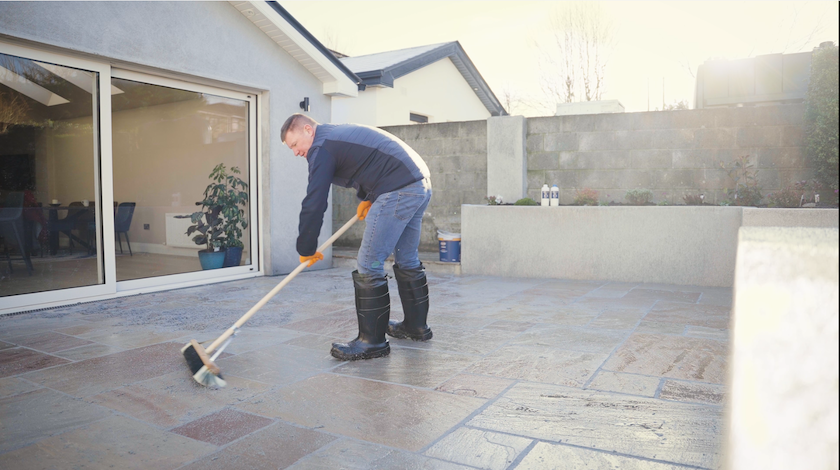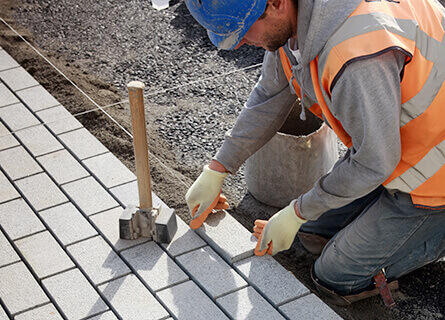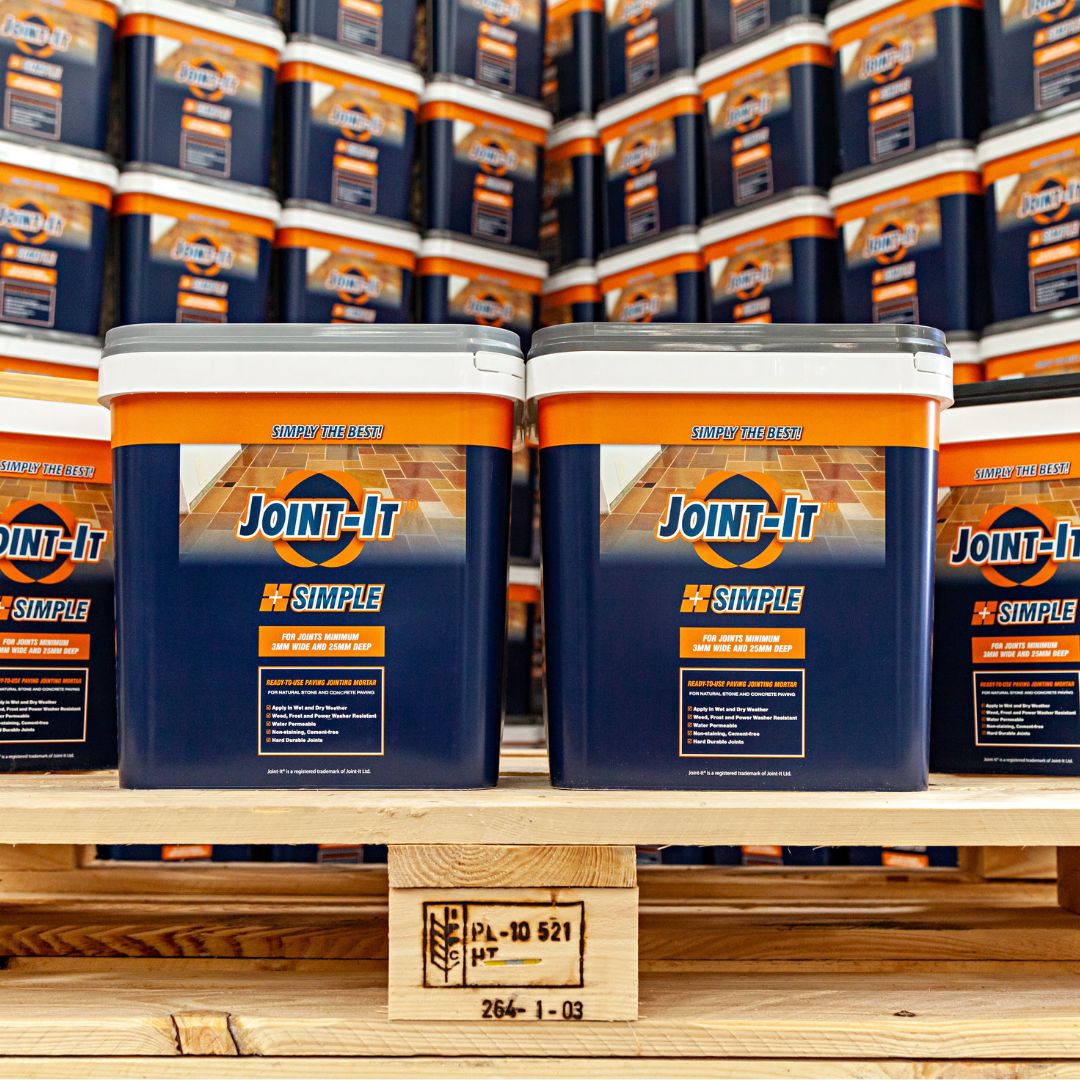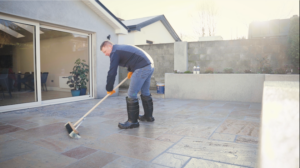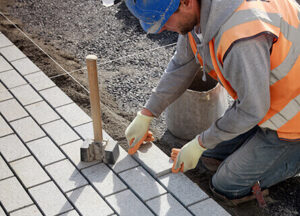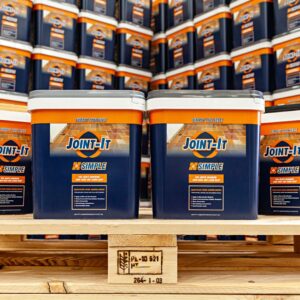Deciding whether to seal your pavers really depends on the paving materials you’re using and the type of finish you’re hoping to achieve. Explore the main reasons for sealing a patio, the best products to use and whether to seal stones before or after installation, so you can ultimately answer the crucial question: should I seal my patio or not?
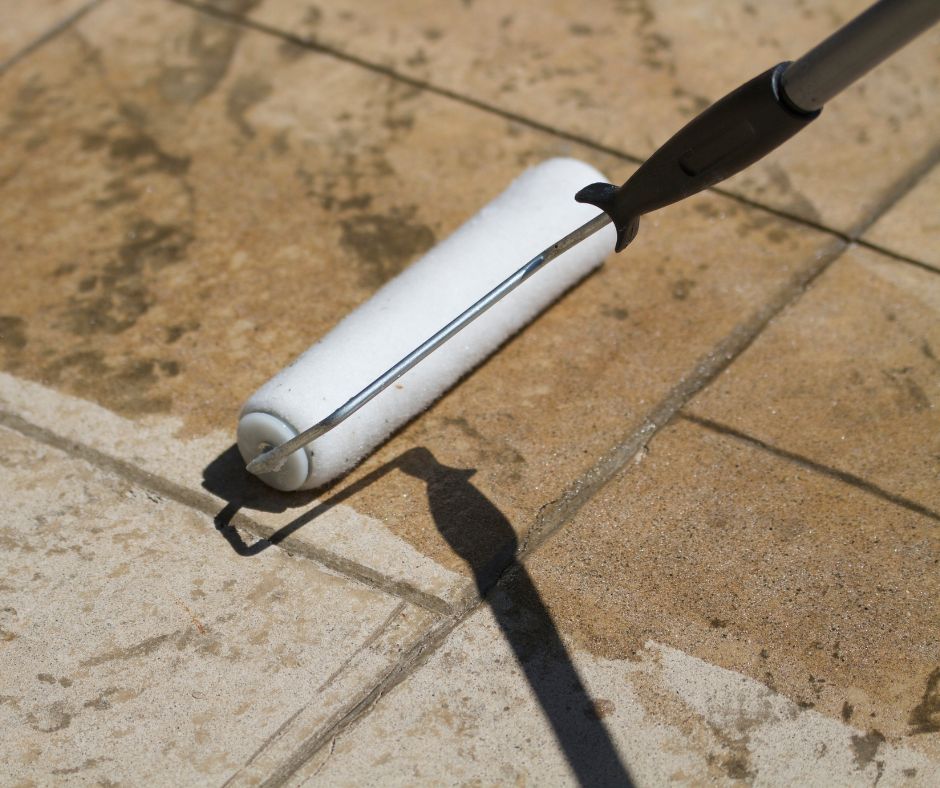
While this is a general guide to help you decide whether to seal paving for your specific patio project, we strongly recommend following the instructions provided on your chosen sealant.
Also, some paving grouts may stipulate certain instructions on which paving materials require sealing and exactly when to apply a sealant.
Always follow the instructions on the products you’re using. Otherwise, seek specific advice from a landscaping contractor, or get in touch with our team if you need some extra help.
Reasons to seal a patio
While sealing a patio is not absolutely necessary, some homeowners opt for sealing pavers to prevent stains and enhance the overall finish of their pavers.
As such, the main reasons for sealing a patio are to:
- Protect pavers from stains, e.g. potential spills, efflorescence or salt residues, iron residues, organic stains, or general wear and tear
- Enhance the colour or finish of the pavers
- Prevent paving stones from weathering or fading due to UV rays
- Prevent water absorption
- Ease the cleaning process later down the track
If your patio slabs are made from certain types of natural stone, such as limestone, granite or slate, it may be highly recommended to seal these slabs to avoid future stains.
Sealants can be either solvent-based or water-based. See our table below for a list of the main patio sealants available with The Paving Experts.
Which types of pavers should be sealed?
Some patios made from natural stone or manmade pavers are more prone to developing unsightly residues and stubborn stains. For certain types of paving stones, removing dirt, algae or accidental spills can be more difficult.
Although whether you seal your patio or not is a personal choice, professional landscapers may advise for the following paving materials to be sealed:
- Limestone, including black limestone
- Sandstone
- Granite
- Slate
- Concrete paving
- Brick paving
- Block paving
Read on for the recommended sealants to use with each of these natural and manmade pavers.
We’ll also look at the best time to seal a patio, and why this may need to be before grouting or at least three months after installation.
Do sealed patios have a shiny finish?
Contrary to popular belief, not all patio sealants leave a shiny finish on the surface.
While sealants are still available with a satin sheen, many others offer an invisible matt finish that can enhance the colour and texture of a natural stone patio.
For example, Nexus ProJoint PRO810 was used to seal the sandstone patio pictured below.
Always check the label and do a spot test. That way you can check whether the finish is exactly what you’re looking for.
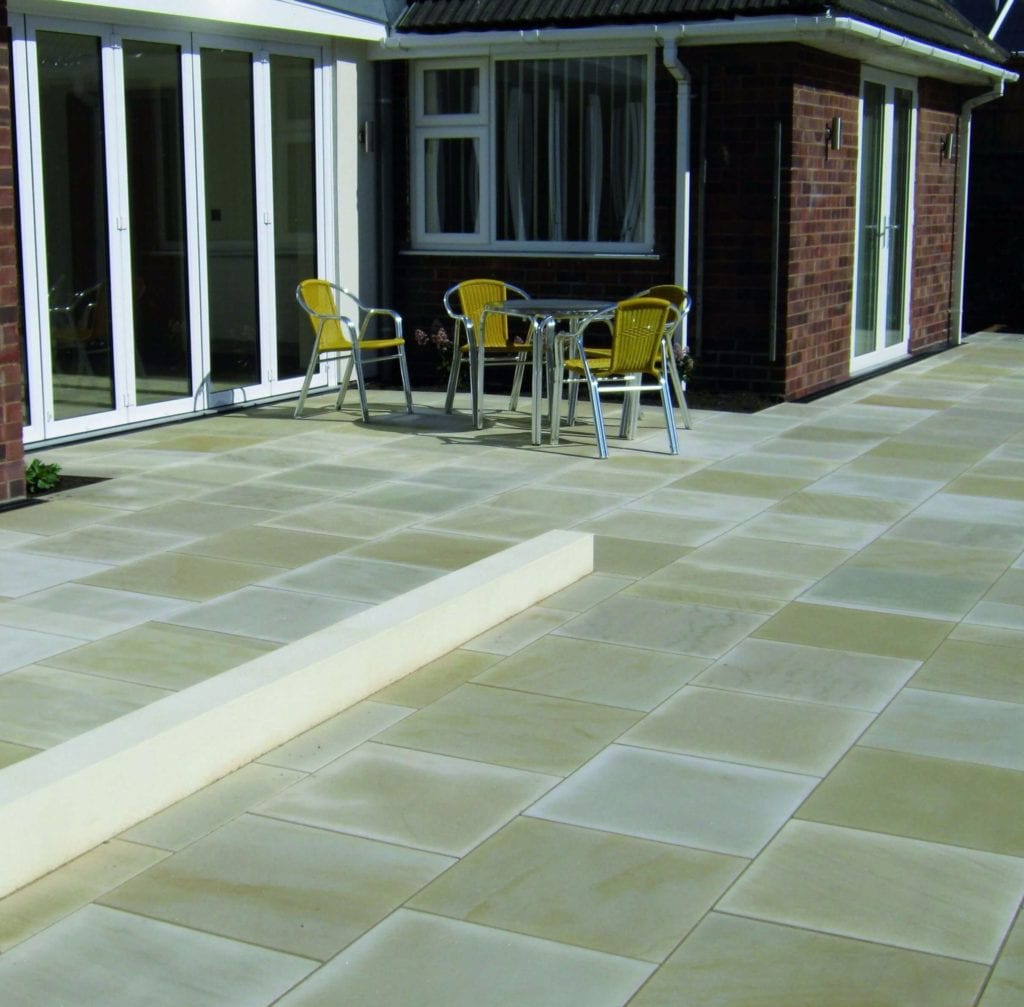
Do porcelain patios need to be sealed?
Unlike other natural stones, porcelain patios do not need to be sealed. This popular paving material is non-porous and so applying a sealant is not required.
However, some patio owners prefer a satin finish to their porcelain patio and so opt to apply a sealant with an added sheen.
Should I seal permeable paving?
If you have chosen porous pavers for your patio so that surface water can freely drain through them, you must carefully consider the options before sealing the stones.
Some types of sealants can reduce the permeability of porous surfaces. Ultimately, this could deem your patio as impermeable and not compliant with local authority sustainable drainage requirements (otherwise known as SUDS).
Contact the manufacturer of the pavers to ask whether sealing the pavers is recommended, or speak with your installer.
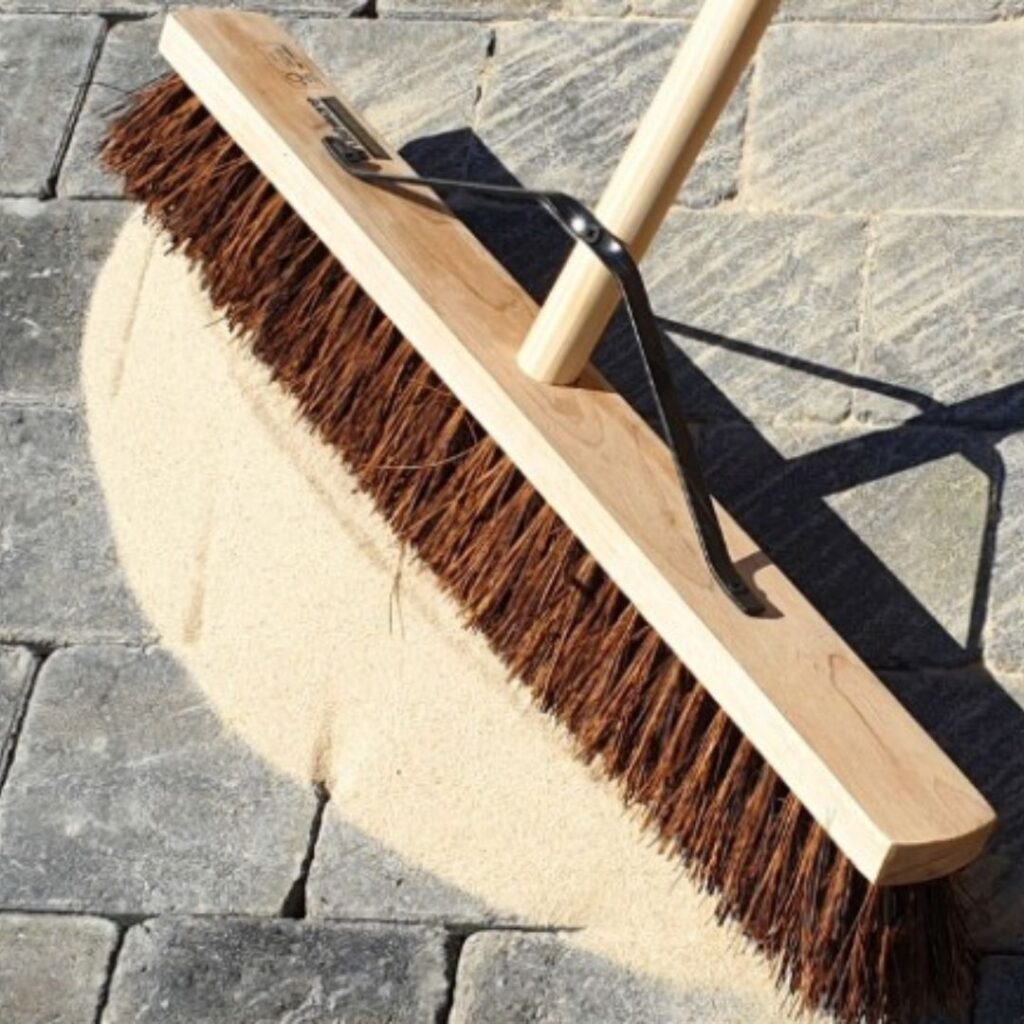
Permeable paving can also be achieved by installing a fully permeable bedding layer and choosing a permeable grout.
Explore the permeable grouts and bedding mortars below that will help you achieve SUDS-compliant projects. They include brush-in grouts and two-part resin systems.
If you’re still weighing up whether going permeable is the best option for your project, take a moment to read about the pros and cons of permeable paving.
Permeable grouts
Explore the full range of patio sealants
The following patio sealants can be used for sealing certain natural and manmade stones. While some sealants offer a satin sheen, others are chosen for their invisible matt finish.
Patio sealant | Suitable for | Specification |
Interlocking concrete and clay blocks |
| |
Black limestone |
| |
Sandstone |
| |
Slate and limestone |
| |
All types of natural stone, concrete, block paving, plus bricks, roof tiles & walls |
| |
Natural stone, concrete and block paving |
| |
All types of natural stone (incl. porcelain) and block paving |
| |
All types of natural stone (incl. porcelain) and block paving |
| |
All types of natural and manmade stone |
|
Natural stone sealants
Manmade stone sealants
When should I seal a new patio?
Deciding when to seal a new patio comes down to the type of paving materials you have chosen together with the type of grout you use.
When installing highly porous pavers such as slate, granite or limestone, certain grouts may require you to pre-seal your paving materials before installing the paving grout.
Otherwise, the grout manufacturer may suggest sealing the stones afterwards, which is usually advised to be at least 3–6 months post installation. Read on to find out why this is.
Always read the paving grout’s full instructions and technical datasheet, and follow any advice given for pre-sealing certain types of pavers.
How soon after laying a patio can you seal it?
Generally speaking, applying a sealant immediately after grouting is not recommended.
Instead, it is normally advised to wait at least 3–6 months to allow any efflorescence or staining to develop through the patio slabs.
By postponing applying a sealant, you allow time for efflorescence to naturally occur and evaporate through the pavers. If you sealed your patio any earlier, you risk sealing those stains into the paving stones for good.
What can I do to avoid efflorescence?
Efflorescence is caused by naturally occurring salts that can develop through the sand/cement bedding mortar and evaporate through the pavers.
As with most things, when it comes to efflorescence, prevention is far better than cure.
The number one way of reducing the risk of efflorescence is by ensuring each paver is securely set on a full-contact mortar bed. The mortar bed must be completely free of voids with each paver securely fixed in place.
Before laying each paver, apply a generous amount of slurry primer to the underside of each slab, and always to the very edges. This high-strength paving adhesive securely fixes paving in place to reduce movement and prevent voids from forming.
Slurry primers for reducing efflorescence risk
How to prepare pavers before sealing
Ideally, pavers should be cleaned before sealing.
First, use a sweeping brush to remove any dirt or debris from the patio. You’ll also need to remove any weeds that may have grown between the patio joints.
Then, use a suitable cleaner for your patio to remove any existing residues or stains. A pressure washer and wire brush may be helpful, or use a hard-bristle brush or sponge if your paving is susceptible to marks and scratches.
Patio and driveway cleaners
Explore the tried and tested patio and driveway cleaners for removing oil, grease, mould, mildew, algae and general dirt.
You should expect brand new pavers to already be clean.
Saying that, it’s still worth checking the pavers beforehand to avoid sealing in any dirt or stains that may have developed during storage or transportation.
How to seal an existing patio
If you’re looking to spruce up an old patio, then a sealant can significantly help to limit weeds, algae and mould growth in the future.
Before applying a sealant, you’ll first need to clean the patio and remove any existing weeds.
Explore the paving cleaners for working with different types of stone and removing a variety of stains and residues.
Is there a downside to sealing a patio?
A paving sealer is obviously an extra cost to consider for the installation and ongoing maintenance of your patio project.
Another consideration is that sealing a patio is not a one-time thing.
After using a sealant, you may need to reseal your pavers approximately every two years. How often a reseal is required depends on the types of paving stones and spec for the sealant you used.
Before each round of resealing, the patio will need to be appropriately cleaned. This is to avoid sealing in any stains or residues that may have developed since the last seal.
As a final note, there are many benefits to using a sealant. While you may prefer the look and finish achieved with a paving sealer, using a sealant will also prevent stains becoming ingrained into the patio’s stones, making cleaning and ongoing maintenance that much easier.

